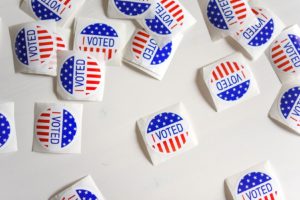The main principles of the US Constitution can be tricky to teach for a few reasons. First, you’re introducing them at the beginning of your Civics class before diving into the Constitution’s actual text. So it feels a little forced—you’re telling them what they are rather than students discovering them independently.
Second, they’re crucial to know to lay a foundation for your course, but time is usually so short trying to cover all the required founding docs as well—the Declaration, the Preamble, plus a few Federalist Papers, and maybe even the Magna Carta depending on your standards.
Third, several of them are pretty similar. This means it’s important for students to understand each and how they relate.
That’s why I wanted to share my lesson sequence for teaching the principles of the Constitution in my senior Civics class. But first, let’s go over the basics of these principles and why they are so crucial to cover well in the first days of your Civics or American Government class.
What are the Principles of the US Constitution?
Scholars, textbook writers, and state standards committees don’t agree on the same list because… well, the Framers didn’t exactly sit down and create the list before they wrote the Constitution.
Think of these principles as themes or ideas that reappear throughout the Constitution. And only after the fact have experts generated this list.
Most tend to say the US Constitution has seven key principles, but the lists aren’t always the same. This raises fantastic side-note inquiry questions like who gets to decide the list and if anything should be added. Scroll to the bottom for more ideas on essential questions.
Here are the eight most-mentioned principles.
Individual Rights – the freedoms that individuals hold without interference from others or the government.
Limited Government – the government is not all-powerful; it can only do things that the people have given it the power to do.
Separation of Powers – the structure of three distinct and independent branches of government that must work together to accomplish major tasks.
Checks and Balances – each branch can “check” or stop the other two during these major tasks; the restrain of any one branch from seizing too much power and causing harm.
Federalism – the roughly even division of power and duties among one central (federal) government and several regional governments (states).
Rule of Law – everyone, even leaders, must follow and be held accountable to well-defined and established laws.
Popular Sovereignty – all power resides in the people; the government can only govern with the people’s consent.
Republicanism – representatives are elected at regular intervals to make decisions on behalf of the people they represent.
Notice how they all pair nicely with the one next to it when listed in this order—for example, limited government and individual rights. You can’t have one without the other. Likewise, the rule of law and popular sovereignty are both about equality. I teach the principles in this order (rather than alphabetically or randomly) to help build a deeper understanding immediately.
Why are the Principles of the Constitution Important?
Collectively by naming these principles, experts have allowed the rest of us to more easily, and thus better, appreciate the thoughtfulness of the Constitution, like why the President can pardon or why Representatives serve only 2-year terms.
It’s way easier to be told a principle exists and then find examples of it than to be asked to generate one from a dense text. Especially middle and high school students. The only downside to this is needing to trust the person telling you, “these are the principles.”
Think of principles as ideas to guide your life. The Framers had principles in mind guiding them when they set out to write the Constitution.
All the individual details in the Constitution (ex., two Senators per state, the supremacy clause, etc.) are the actions of trying to uphold those principles.
But there is one more piece that often gets forgotten. Principles are rooted in the core values of the American identity, like equality and freedom. Values are like deep-rooted feelings. You just feel in your bones that freedom is important.
How to Make Teaching the Principles Engaging
Since these principles are so foundational to the United States government, you’ve got to spend more than a 10-slide PowerPoint covering them. Remember, these principles are guiding ideas, so students need to practice, evaluate, and apply them to truly appreciate them. I usually spend three to four class periods on them.
Here’s my lesson sequence for how I teach the principles in an engaging and meaningful way.
At the end, you’ll find practical tips for assessing students and fitting them into a larger inquiry arch, like my Foundations of American Democracy unit.
1. Define the Principles
Incoming knowledge of the principles will vary. Some will be able to describe them pretty well, others not at all. An anticipatory activity like card matching allows you to assess what students already know.
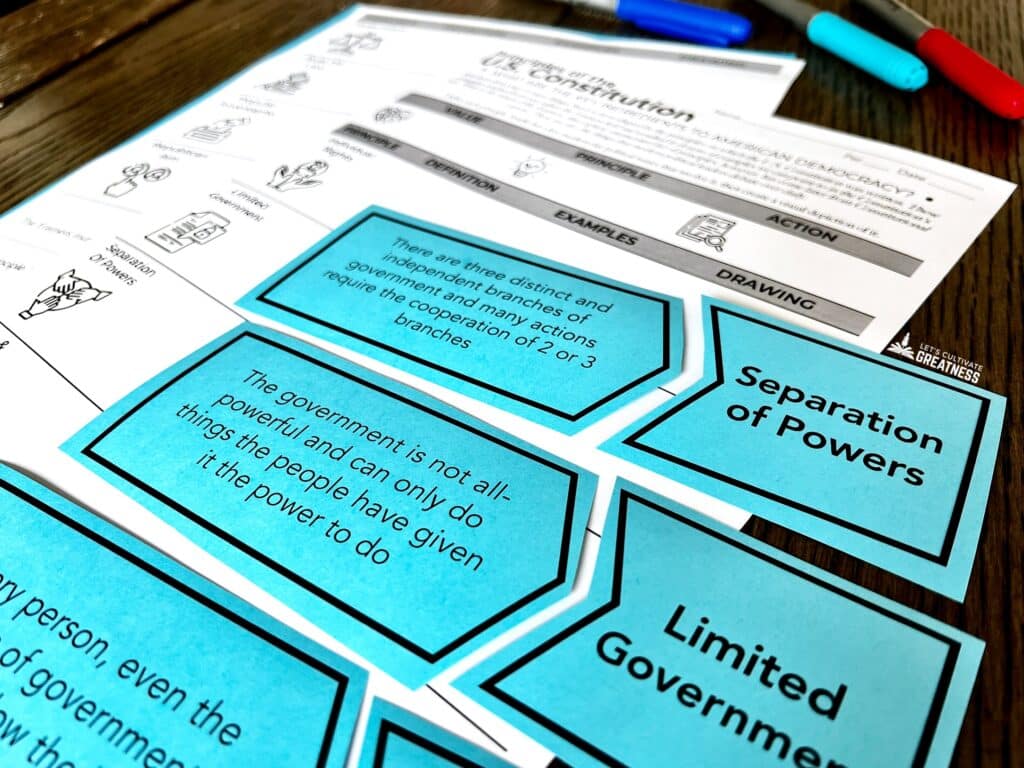
Next, share short and clear definitions so all students are on the same page. This works best as lecture slides and guided notes for students to fill in.
2. Provide Real-World Examples of Each Principle
On each slide, I also include photos that illustrate straightforward examples of the principle.
For popular sovereignty, I use a photo from the 2020 election of people wearing masks and dropping off their mail-in ballots. This shows that even a deadly global pandemic didn’t stop the election.
Next, I crowdsource for a few more examples that students can think of. They might say student council elections or mention a recent state ballot measure.
Students add these 3-4 examples to their notes.
3. Create Political Cartoon Stations
For the next activity, I have gathered political cartoons depicting recent events involving each of these principles. I place them around the room as eight stations. My go-to is Daryl Cagle’s political cartoon database for finding cartoons. Just type the principles into the search bar.
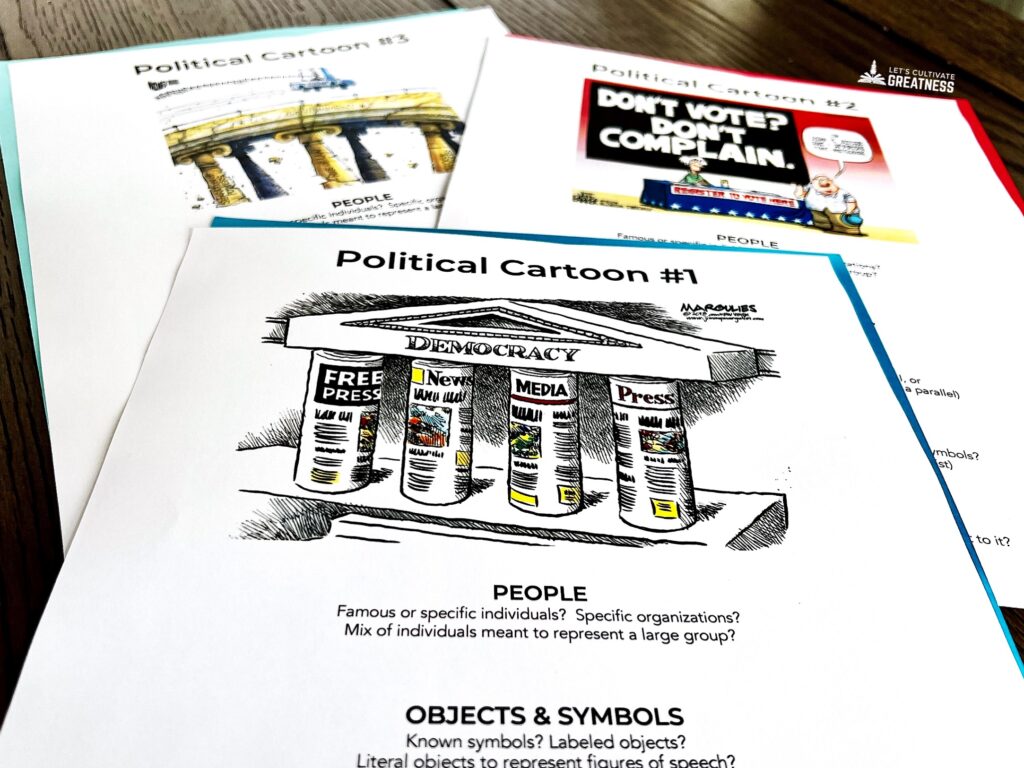
I use a framework I call POPES for analyzing political cartoons. After practicing with a few cartoons as a class, I send them to the stations to start analyzing.
The trick is not labeling the cartoons with the principle they are depicting. Afterward, students must decide which principle the cartoons are demonstrating.
4. Build Gummy Bear Dioramas
The second student-centered activity we do is my favorite! I put students into random groups of 3-4 and assign them one of the principles.
With some gummy bears, a paper plate, and access to an assortment of supplies like markers and tape, groups must create a diorama of their principle.
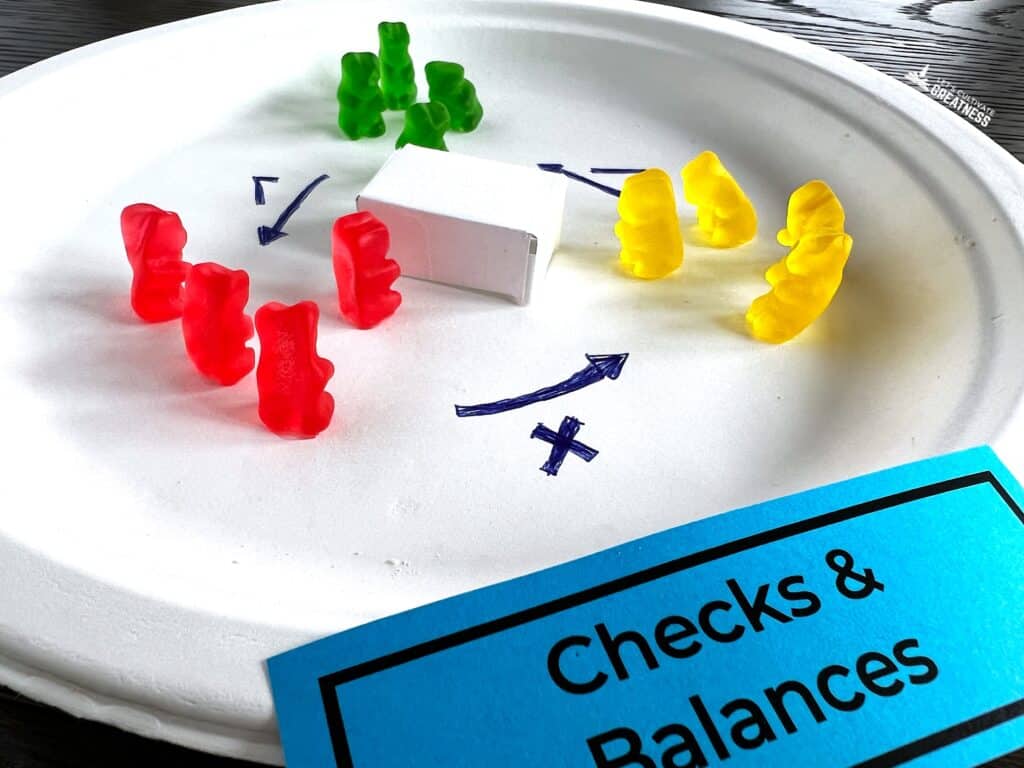
Afterward, students guess each group’s principle. The groups then explain their thought processes and the included details of their diorama.
5. Draw Pictures of Each Principle
The final activity students do is draw the principle now based on everything they know—the definition, a handful of real-life examples, and the dioramas. I include a spot for these on their guided notes.
Assessing Student Learning
This topic is perfect for a pre- and post-assessment since students will have some level of incoming familiarity. And while matching definitions or examples to the principles is an obvious way to measure growth, be sure to ask higher-level questions too.
One way to do this is to ask questions that connect the principles to your school, like, “Which principle does our school uphold the most clearly? And which one does it uphold the least?”
Or that connect to current political issues, like “Which principle seems to be a source of division right now in America?”
Incorporating Inquiry & Essential Questions
Once you share with students that this list of principles isn’t actually set in stone anywhere (or even agreed upon), it opens things up for all sorts of inquiry.
Questions like:
What’s the benefit and what’s the harm when people declare a definitive list?
What’s a principle missing from the list? What needs to be added?
Which principle does modern America uphold the best? Which one does it struggle the most to uphold?
We do this lesson sequence in our Foundations of American Democracy, which is guided by the essential question, “How do we define our American democracy?” These principles are part of the answer, along with other founding documents and the various types of government.
Developing an Authentic PBL Project
Using the analogies mentioned earlier, this topic flows naturally into a personal goal-setting project for students. I love best that it connects perfectly with the time of year you teach this content—either at the start of the school year or the calendar year, working for both first- and second-semester classes.
Modeling after the Framers, have students reflect on their core values and develop a goal statement (a principle, so to speak) for the year, then create an action plan of specifics to achieve the goal.
My ready-made GREAT Goal Setting kit follows this format and is embedded in my Foundations of American Democracy unit with these principles of the Constitution lessons.
Even better, this project builds relationships and sets a tone of agency in your class in only a class period or two!
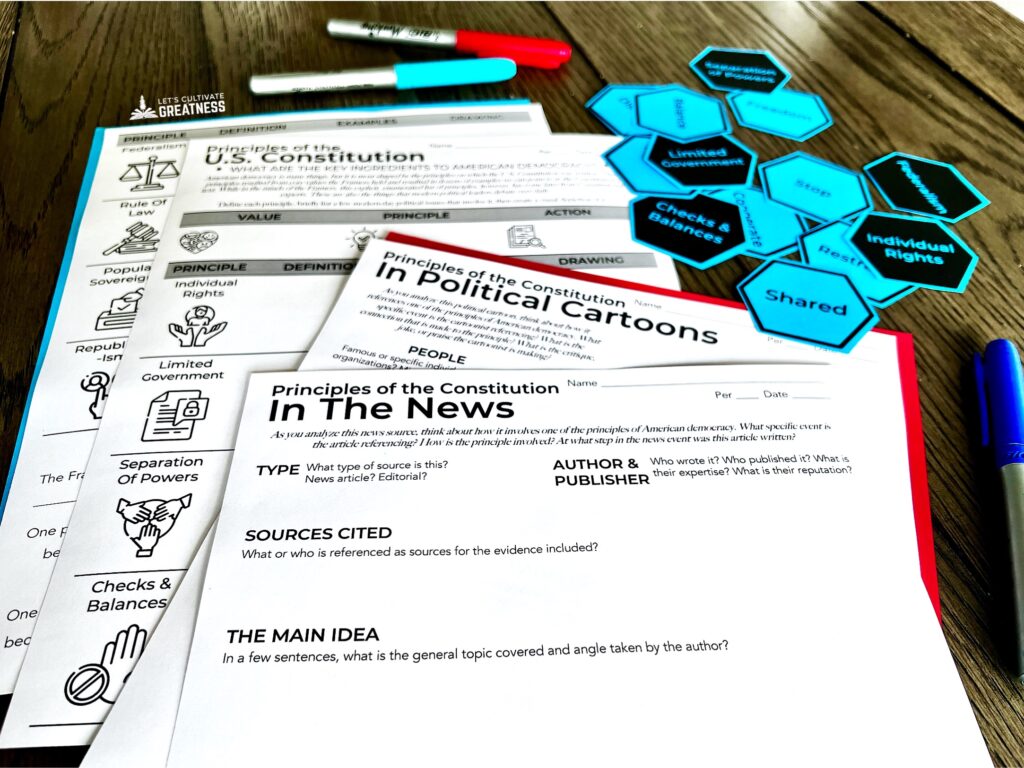
Grab my Principles of the Constitution activity kit if you want a done-for-you kit of 7 mix-and-match lessons for your classroom. If you want to explore how to fit this topic into your Civics class,
check out my Foundations of American Democracy unit.
Feature image photo credit: Deposit Photos




